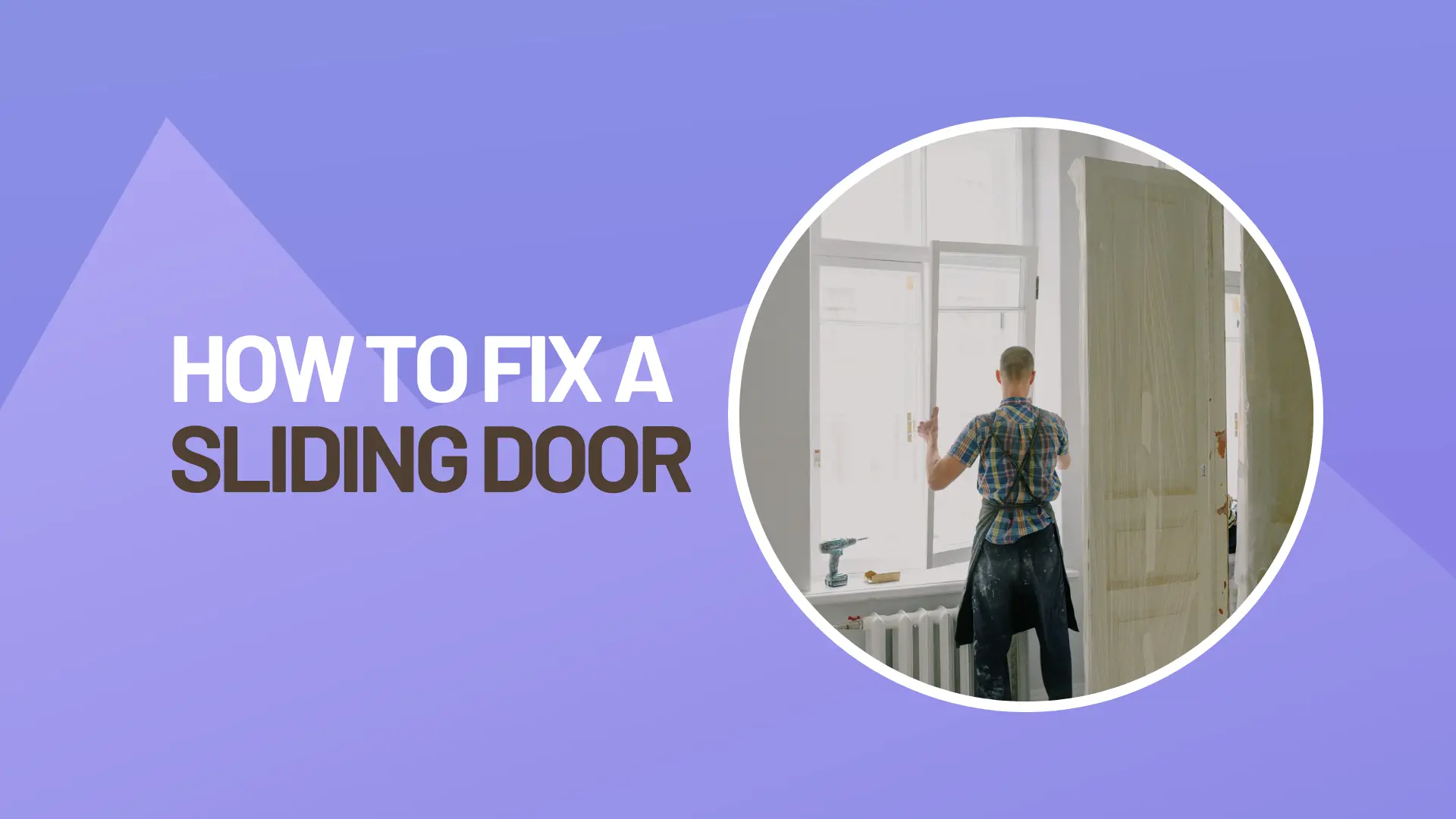How to Fix a Sliding Door
After years of use, you may discover that your sliding patio door is no longer functioning or appearing as it should. Perhaps it frequently becomes stuck, or the screen is hopelessly drooping. The good news is that, unless there is an underlying structural issue, these issues are easily solved. Uncooperative sliding doors are usually caused by dirty rollers from debris in the track, and wrinkled screens are readily replaced.
Follow the instructions below to do a simple tune-up on your patio door. You may have your old door sliding like new in a matter of hours.
Step 1: Lower the Door
Place a drop cloth on the floor and remove the two plugs at the bottom of the sliding-door frame that hide the roller adjustment screws. These are sometimes found on the door's edges.
Insert a flathead screwdriver into each hole and turn the screw all the way counterclockwise. The rollers are retracted, lowering the door.
Step 2: Remove the Head Stop
Set up a couple of sawhorses with cushions outside. Remove any detachable grilles, blinds, or drapes.
Back out the screws on the head stop and slide the door fully open. After this stage, do not leave the door unattended; it may fall if not stopped.
Step 3: Remove the Bottom Track
Lean the top of the sliding-door panel toward you and raise it off the bottom track while standing inside. (You may need to enlist the assistance of another person for this stage, since the door can be heavy and awkward.) Place the panel on the sawhorses.
Step 4: Inspect and clean the roller assemblies.
Gently pull each roller from its pocket at the bottom of the door with a flathead screwdriver. (Rollers are normally held in place by friction and the weight of the door.) Replace them with new roller assemblies if they are deformed or broken.
Scrape any dirt off the wheels before cleaning them with denatured alcohol and a rag. Lubricate the wheels with dirt-resistant silicone spray.
Reinstall the rollers by matching their adjustment screws with their access holes and pounding the assemblies in with a hammer. To protect the wheels, use a wood block. Retract the rollers as far as possible after they have been seated.
Step 5: Clean and Lubricate the Tracks
Spray silicone on the head track and the outside face of the removed head stop after wiping them with alcohol.
Vacuum any loose material from the bottom track, then thoroughly clean it with alcohol. The bottom track requires a more significant lubricant than silicone; massage it with a block of paraffin wax a few times.
Step 6: Replace Damaged Weatherstripping
To repair broken or cracked weather stripping where the sliding and fixed panels overlap, use a flathead screwdriver to loosen its staples, then hold one end and pull it and the staples off the door, gently prying with a putty knife.
Using pliers, remove any remaining staples. Hammer the shattered ones into the ground.
Generally, the strip on the jamb side is bonded on. Pull it off and scrape the adhesive residue with a putty knife, being careful not to ruin the finish.
Where the sliding panel's frame overlaps the fixed panel, install the new weatherstripping with the flap facing out, as directed on the package. Align the top end of the flange with the shadow line of the head stop and tighten the flange along the door's edge.
Drill a 1/8-inch pilot hole in each of the flange holes and screw in the provided screws. Repeat on the fixed panel so that the two strips interlock.
Using a plastic glue, secure the jamb-side strip in place. Alcohol should be used to remove any smudges and fingerprints.
Step 7: Repair the Screen
Remove the screen door if it is sagging or wrinkled, then set the door frame on a flat work surface and slide a 1x4 block under each end. Clamp the door down the center to create a tiny bend in the frame.
Use staples or a rubber spline to secure a replacement screen to one end of the frame. Proceed to the opposite end and fasten the screen snugly and flatly (but not too tightly). When the clamps are removed, the door frame will draw the screen tighter as it straightens. Attach the screen's sides to the frame.
Step 8: Reinstall the Door
Replace the door on the bottom track and tilt it up. Reattach the head stop and brace the door with your body. (Do not leave the door open until the stop is in place.)
Roll the door up to a half-inch from the latch-side jamb, then adjust the rollers until the door is parallel to the jamb. If the latch does not mate with its receiver on the jamb, unscrew the receiver screws and move the plate up or down.



Leave A Reply